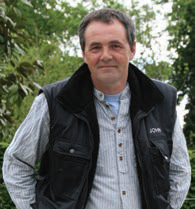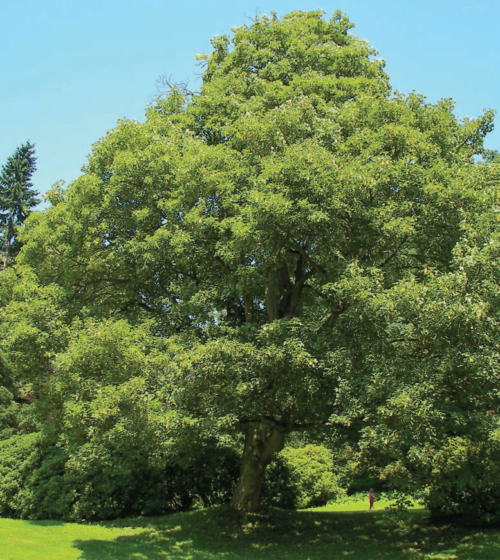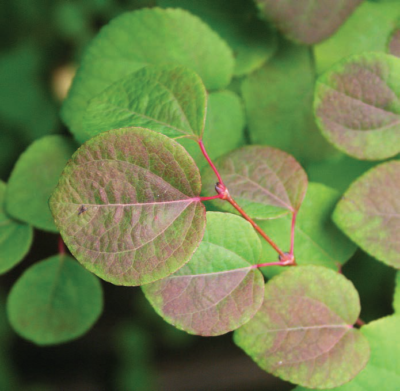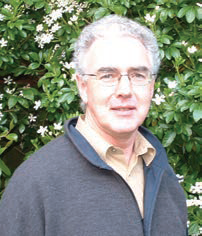Ireland’s leading tree specialists share their thoughts on what trees we should be growing
| It’s been said that the real meaning of life is to plant trees under whose shade you never expect to sit. If this is the case, then there are a lot of professionals involved in tree planting with life sorted. Alas, it is a poor choice5 of the tree rather than longevity that will limit the opportunity to shelter beneath the shade of mature specimens. You see, as a nation, we’re not good with trees. We love them for sure, can grow a huge variety and appreciate their beauty and environmental benefits, but when it comes to planting the right tree in the right place we often fall short.
There are many reasons why we struggle with trees: poor education, inadequate contextual knowledge, limited dissemination of past experience, lack of consensus on what we should be planted, reliance on UK-focused data and guidance, and a general lack of joined-up thinking on the subject. Despite the problems we have with trees in Ireland, we do have a wealth of experienced professionals who’ve to know which trees we should be using and where. To help address the issues I asked a number of them to share their thoughts on what trees they’d recommend for specific locations. Obviously this could easily be a book in its own right, so to narrow the focus I asked for thoughts on the following situations: coastal, urban street, small gardens, rural gardens, hedgerows, courtyards, shelterbelts, specimens and waterside. The experts were not confined to the situations and were also asked to share their favourite trees. |

JOHN MURPHY, ANNAVEIGH PLANTS
PROVENANCE IS EVERYTHING
On a few occasions, I actually visit landscape sites to give advice on tree planting the first thing I do is to look at what is growing in the area and how much shelter is available to allow planting outside the resident species. Many years ago I was involved in a job in Wexford where the client insisted on planting semi-mature Acer campestre ‘Elegant’ on the driveway about two miles from the sea with no protection. The result was a disaster and the only trees that thrived were those in the shelter of the house. The original suggestion was to use Fraxinus ‘Westhoffs Glory’ but when the client discovered they were ash trees they were knocked on the head as being weeds. The only trees doing well in the locality were ash and Lawson’s cypress.
When considering trees, most people want to go for the exotic, colourful and rare. Hence the many specifications we come across with Acer griseum, Liquidamber and Robinia ‘Frisia’, all fine trees but suited only to sheltered sites in Ireland and in many cases best planted as multistems.

Coastal locations are common in Ireland and require a first defence if you wish to establish more ornamental plantings. Our first choice was always Fraxinus (ash) but with the present ban we had to change to Sorbus intermedia and other Sorbus aria types (whitebeams), Acer pseudoplatanus (sycamore) and Quercus ilex.
As we are heavily involved in urban street planting it annoys me to see Sorbus aucuparia selections used in these locations. They never thrive and are relatively short-lived. They are more suited to urban gardens or sheltered rural sites. How many times do you see poor specimens of Sorbus ‘Joseph Rock’ planted outside an industrial facility where Tilias or Carpinus betulus would be more suited? A selection of the best street trees would include Oriental Plane, Corylus colurna, Tilia cordata ‘Greenspire’, Carpinus ‘Frans Fontaine’ or ‘fastigiata’, Acer campestre ‘Elegant’ or ‘Elsrijk’. Acer platanoides ‘Emerald Queen’ is also an under-used tree for street planting. Pyrus ‘Chanticlear’ has become a popular urban street tree in recent years and in cities will remain almost evergreen year-round.
For a pure ornamental appeal in the urban garden, it’s hard to beat Malus cultivars. With the right choice, they give flower, fruit and autumn colour. In this situation, it’s best to try and plant them fully branched to the ground; that way you increase the show throughout the seasons. The flowering cherries are also a must but in rural areas, it’s best to stick to the white-flowered varieties as they fit in better with the natural environment. Prunus avium ‘Plena’, Prunus ‘Shirotae’ and Prunus ‘Tai Haku’ are all fantastic white-flowered cultivars that do well in the Irish climate.
One of my pet hates in rural Ireland is the practice of tearing out a perfectly good Irish hedgerow and replacing it with post and rail fence and out of place hedging. One of the best hedging plants in rural Ireland is a thorn hedge. Properly established and maintained it is hard to beat but as the poor ash tree it is regarded with disdain if you suggest it as a hedge for a rural house. It flowers, fruits and provides a great habitat for wildlife and helps to blend the house into its rural setting.
In Ireland, we are reluctant to use many multistem trees. They are perfect as specimens in courtyards and limited space planting but also play a big role in screen planting. We tend to think only of the very ornamental forms of Amelanchier and Betula jacquemontii but multistem Acer campestre, Alnus glutinosa, Corylus avellana and Sorbus all provide great cover in a shelter planting or height to bank planting where standard trees may look somewhat manicured in this situation. For parkland planting, the oak and beech are hard to beat with limes a good second choice. With modern farming methods not encouraging parkland planting, we are gradually losing the stately trees in the middle of the country fields. There are only a few estates continuing the practice and we need to encourage more parkland planting in the future. It would be a shame to lose the sight of the mature limbs sweeping down and trimmed by browsing livestock.
About five years ago on the nursery, we embarked on a programme of planting as many species trees as possible from Irish seed sources. Over those five years, I have observed the growth rates and form of the Irish stock against the imported stock and I can defiantly say that the alder, oak and birch from Irish seed superior products. Alders grow slower and are stockier and the common birch (Betula pubescans) has a great natural shape without excessive training. We have found it difficult to get a continuous supply of Irish stock but my advice is to use as much Irish seed selected stock as possible and if this is not available to at least plant trees grown in Ireland.
John Murphy is the owner and operator of Annaveigh Plants and is one of Ireland’s most experienced and respected nurserymen. For more information visit www.annaveigh.com ✽
 TERRY O’REGAN
TERRY O’REGAN
THE RYANAIR TREE
Michael O’Leary of Ryanair has had some proud moments in the winner’s enclosure at race meetings at home and abroad. I am not sure how closely he is involved with the breeding of his bloodstock, but wonder as he might begin to contemplate retiring should he invest in plant breeding?
Those readers old enough to remember the arrival of Japanese cars in these islands will recollect two undesirable characteristics of the likes of the Toyota Starlet 60 series – they were prone to rust and the seats were designed for small bums. I am sure that Ryanair planes are not prone to rust, but their seats are designed for small bums and short legs. Michael O’Leary has had a partial change of heart and would now like to welcome business passengers aboard, but to be comfortable they would be advised to come in convenience pack dimensions.
Michael likes novel ideas. To enrich the business class experience he might consider some landscaping a verdant screen of trees on a row of seats between the favoured few and the low-cost masses. He might even sell off the trees at the end of each journey. But to fit the limited seat dimensions he would need a tree of well-behaved dimensions – Mickus olearianus ‘Constrictus’ springs to mind – ‘The Ryanair Tree’ – a large bonsai to continue the Eastern connection. Joking aside, just as life has in many ways become ever more constricted for us human beings, so has life become ever more constricted for our vital friends – our trees.
Back in the 60s at the start of my horticultural career I often pondered the city centre trees of Dublin and Cork – how did they survive and thrive with their root zones under pavements and buildings? As the years passed I have noticed how many of them have deteriorated and died slow ignominious deaths and the trees planted as replacements are a bit like our washing machines – they come with a certain life span.
Investigating the phenomenon does not require all that much high tech science. Back in the 60s, there was not that much competition under the pavement – open rubble and soil substrate, a few gas pipes and leaking water pipes and sewers providing necessary essentials and not that much traffic compaction. Now the urban underground is a maze of cables, pipes, concrete and rammed hardcore. Architects and engineers ask us silly pointless questions – “What volume of soil do you need for that tree?” or even worse: “How much space do you need for the rootball?” At the same time, they produce perspective drawings of their proposed creations with mature leafy trees framing the vision! And we are accomplices because we produce landscape master-plans with lots of mitigating trees to satisfy the planning process. Even worse we provide unsustainable growth projections for 10 and 20-year photomontages.
Perhaps the only solution is Mickus olearianus ‘Constrictus’, a tree to fit Randy Newman’s questionable hit ‘Small People’.
We need trees in our urban areas, but delivering on that need is a highly complex exercise requiring hard decisions, sophisticated planning, rigorous informed specification and honesty in the industry that quite frankly has been absent for far too long.
Terry O’Regan is an acclaimed landscape architect and is one of Ireland’s most active landscape advocates. In addition to running his award-winning landscape company BHL Landscapes, Terry is also an author and industry commentator. For more information on his practice, visit www.bhl-landscapes.com ✽

ANGELA BINCHY
IN PRAISE OF SMALL TREES
Large trees are magnificent, worshipful creatures but we must remember their bulk when mature, their potential light blocking qualities and spreading greedy root runs which may limit the choice of ground cover under them. Many of them have a rather sombre choice of midsummer dress. Fortunately, nature realised this and has provided us with a large and magnificent array of shapely and colourful medium to small trees, and large shrubs we can adapt to grow tree-like.
In the past, I have enlivened an area in front of an existing beech plantation overpowering a large garden by planting eight standard Amelanchier Canadensis in an informal line a few metres from the tree canopy. Now mature the drifting starry, white, flower cloud in May is quite spectacular, and thanks to lots of peat and FYM added at planting the foliage gives off a fiery glow in autumn. It would be nice to have more standard Amelanchier available.
Small trees or large shrubs grown as trees are a very efficient way of adding impact to a difficult area or indeed to any park, private garden or yard, especially if they are grown or pruned as multi-stems. Those with light feathery leaves such as Japanese acres, amelanchiers, Euonymus europaeus, Halesia carolina or other members of the lovely snowbell Styracaceae family, Cercis canadensis ‘Alba’, Cornus kousa, Ginkgo are particularly useful. I usually place them as single specimens or in small groups underplanted with bulbs, ground cover or low growing perennials with a flowering season often different to the highlight season of the tree. This planting regime plus the sculptural shape of the tree will give one an interesting feature for a large or small garden all the year-round.
Garden designers at Chelsea Flower Show have frequently used multi-stem small trees to stunning effect. Some of the species that I remember used this way were Acer campestre, Prunus serrula with magnificent polished red/brown stems, Rhus typhina ‘Laciniata’ with great, ferny leaves, funky Viburnum rhytidophyllum, and Syringa species. At Bloom Paul Foley had a silver-leafed multi-stem Acca sellowiana in his gold-winning ‘Facing South’ garden. A striking plant but too tender for general use here.
Certain such trees are particularly useful to add highlights to difficult areas on the north side of existing trees, hedge or wall. I have successfully used mixed plantings of multi-stem acers such as Acer palmatum ‘Bloodgood’, Acer palmatum ‘Sango-kaku’ syn ‘Senkaki’ and Acer pensylvanicum in such positions underplanted with Symphytum officinale if the area is contained. Such a planting has produced colourful stems in winter, leaf interest in spring and especially autumn, and the blue/pink flowers of Symphytum in late spring through summer. The Symphytum is trimmed to base at the end of July early August, there is no other maintenance. Japanese acers need shelter from cold winds to get them going but once acclimatised to their position and well-fed they are fine.
If the soil is neutral to acid in a similar north side situation with a little shelter, or a large peat bed is made one can grow Pieris japonica, Euonymus europaeus, Rhododendron spp, Arbutus x andrachnoides as a clean single stem or multi-stem small trees. Underplant these with drifts of Pulmonaria, hellebores, spring bulbs, Digitalis grandiflora plus autumn crocus and Cyclamen and we have a spectacular changing vista of colour in the evergreen leaves, stems, and flowers and fruit for most of the year, all requiring little maintenance.
There really is a place for more multistem small trees as mentioned to be grown, especially those that row in with spectacular stems, leaves and flowers in one package. Remember also that existing mature large shrubs can be transformed with judicial and artistic pruning and stem cleaning. It breaks my heart to see large established shrubs with architectural potential being dumped in the skip.
For small spaces and yards, I find half standard Sorbus ‘Autumn Spire’ invaluable, to a lesser extent Prunus ‘Amanogawa’. For maximum impact, both these trees must have evenly shaped and spaced branches set compactly on the tree. Standard and half standard Pyrus calleryana ‘Chanticleer’ is also very useful, being almost evergreen and with spring flower and autumn colour. The Sorbus and the Pyrus can make spectacular stand-alone specimens if they are well grown and feathered to the base. So too can a member of one of my favourite tree species, Parrotia. Parrotia ‘Vanessa’ grows sufficiently upright to put in a yard, again acid soil or plenty of peat and FYM in the planting pit enhances the autumn
colour. Sorbus thuringiaca ‘Fastigiata’ is another tree I find amenable for small spaces.
Angela Binchy is a renowned landscape and garden designer, a founding member of the GLDA, and an active industry commentator. ✽

 ROY GOODWIN
ROY GOODWIN
TREE-SPACE
Arboriculturists now largely deal with the assessment and management of mature landscape trees. That, of course, means trees that were planted anything from 20 to 200 years ago. For anyone designing a tree planting scheme the most useful knowledge can be gained from studying local mature plantings; to appreciate what worked well and what (sadly all too often) has not; and to understand why.
Matching species to site dynamics is not that difficult, but mistakes can and are often made. One of the most important but frequently misjudged factors can be summed up in one word: space. To perform at their optimum, trees need sufficient space below ground with adequate volume and quality of soil, and above ground space for crown development. We need to think about it as growing trees, not just planting them.
Below is a small selection of trees I personally feel will do well in specific Irish contexts.
THE COASTAL TREE
My choice is Acer pseudoplatanus. I suspect this species accounts for more of all our finest mature specimen trees in coastal locations than any other. Never mind the gardeners’ hatred of its profuse seedlings. Sycamore is a long-lived, resilient tree; and, in maturity (if not mal-pruned), a handsome one. The coastal setting even removes the one minor problem of foliar infestation of aphids. In addition to several oaks, and whitebeam, that also do well in this setting, the small native Arbutus unedo can also be apt.
THE URBAN DWELLER
Inadequate soil equals poor trees; and in the urban setting especially, soils are often limited. Our towns and cities need larger canopy trees: long-lived species that reach a large size. These are the trees that provide the maximum benefits, visually, environmentally and socially, the benefits of which are too numerous to list here. It is of course not easy to commandeer space for trees in our towns. But design solutions are there; examples include the Georgian squares of London and Dublin, or modern engineered products to allow adequate uncompacted soils beneath pavements and roads.
Most of all I hope designers of urban tree planting schemes will – one day soon – stop having (and being forced into) a five-year viewpoint; where a tree is planted, often without the slightest consideration that (if it survives) it will grow to mature size. Even in the urban setting, in general, we should not rely on repeated pruning to control tree size or rely on future removal of trees to thin group plantings. Trees are both essential green infrastructure and unique elements in any designed landscape, as their function in and interaction with that landscape and its users changes with time as the trees mature. If we want quality sustainable landscape plantings, we need to start thinking about what will happen in 50 years, not focus solely on just how it looks and performs in the first five years after installation.

In this setting especially, with good site assessment and preparation, the choice of species is really only limited by your imagination. We need greater species diversity in our urban plantings, not least to ensure resilience against pests and diseases and climate change.
One good example, for urban streets, is fastigiate oak, Quercus robur ‘Fastigiata’. Other good choices – you will see them already on some Dublin streets – include Turkish hazel and Pyrus ‘Chanticleer’.
TREE FOR THE SMALL GARDEN
There is an almost endless choice of species here. In general, choose a small maturing species, given the space limitations. Two favourites include: Acer griseum, and Cornus controversa.
THE COURTYARD SPECIMEN
The choice depends on space, and on the visual effect wanted in relation to the architecture.
One suggestion for a small area would be Betula ‘Youngii’ if there is room for a weeping specimen. A medium-sized area could suit Cercidiphyllum japonicum. And for a larger (but sheltered) space where summer shade is not unwelcome, a (male) Ginkgo biloba could make a striking choice.
SPECIMENS
There are so many species to choose from. An oak would often be a candidate. Sessile oak (Quercus petraea) for example, can make an even better-formed, massive specimen than our other native oak, Q. robur. Many of the red oaks and the evergreen oaks such as Lucombe oak make excellent specimens. Another topical choice could be Aesculus indica (Indian horse chestnut); It seems resistant to Pseudomonas canker and the recently introduced leaf miner besetting our common horse chestnuts. Lastly, another favourite would be silver lime Tilia tomentosa ‘Petiolaris’ (that is, the weeping silver lime, not T. ‘Brabant’).
Whatever your preference, for single specimens space really is crucial. So if the species has a 20m crown spread when mature, try to ensure that no other trees or buildings are within 10m.
WATER’S EDGE
Rather than the obvious weeping willow, Populus tremula ‘Erecta’ is a columnar form of native aspen. It has good autumn colour and is good for framing views. In less formal waterside settings, our native alder (Alnus glutinosa) or its cultivars may be ideal.
SUMMARY
Match species to site conditions in an informed way to get the maximum tree benefits. Urban and garden sites can often be ameliorated to allow a greater variety of imaginative and apt species choice. Ensure adequate soil for the species to fulfil its potential, and then ensure that your planting design allows sufficient above-ground space so that the tree’s mature crown size does not become an unmanageable problem instead of the valuable asset it should be.
Roy Goodwin is one of Ireland’s leading arboricultural consultants working throughout the island of Ireland. He is also chairman of the Irish branch of the Arboriculture Association. ✽




 TERRY O’REGAN
TERRY O’REGAN ROY GOODWIN
ROY GOODWIN

